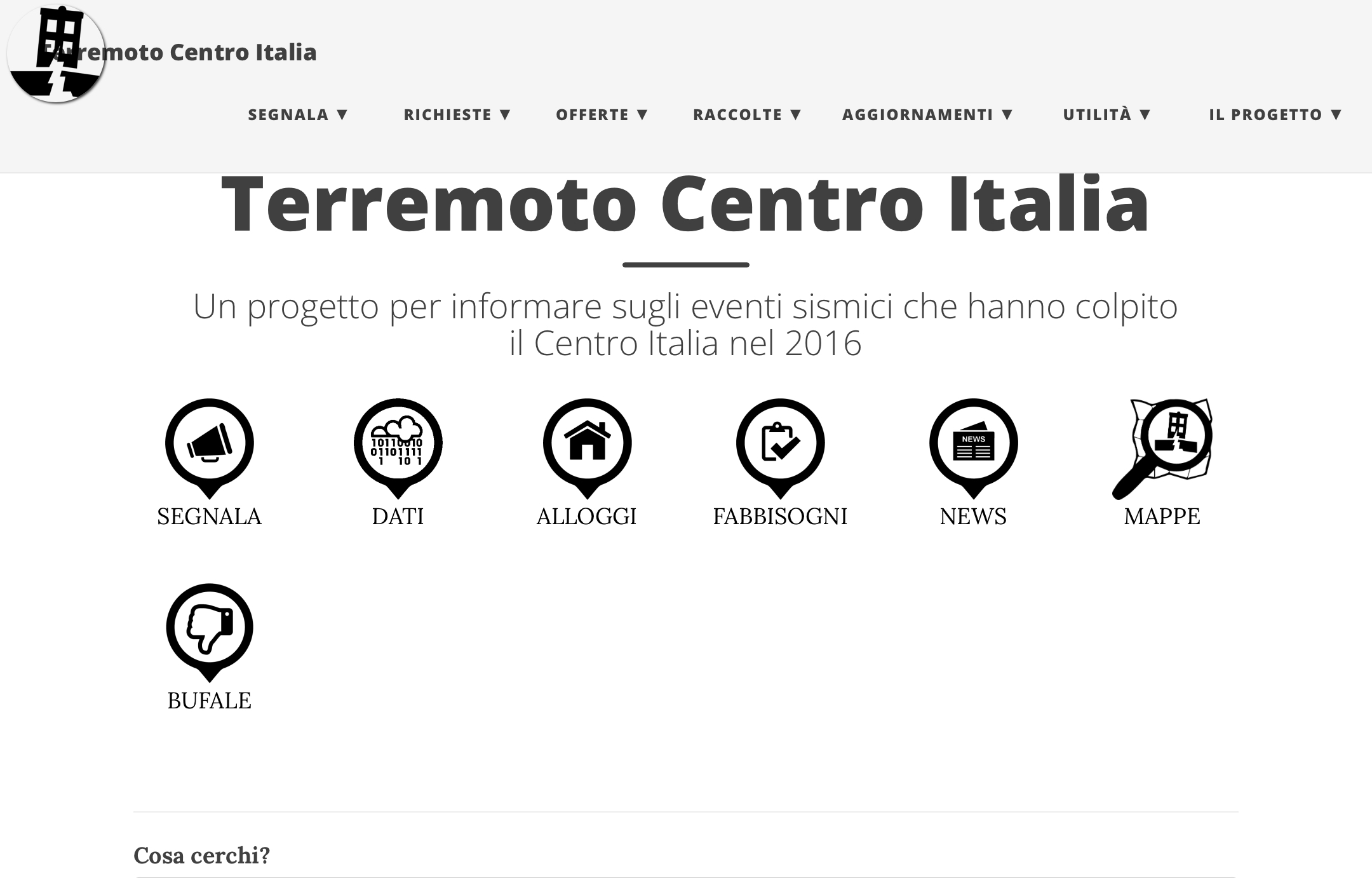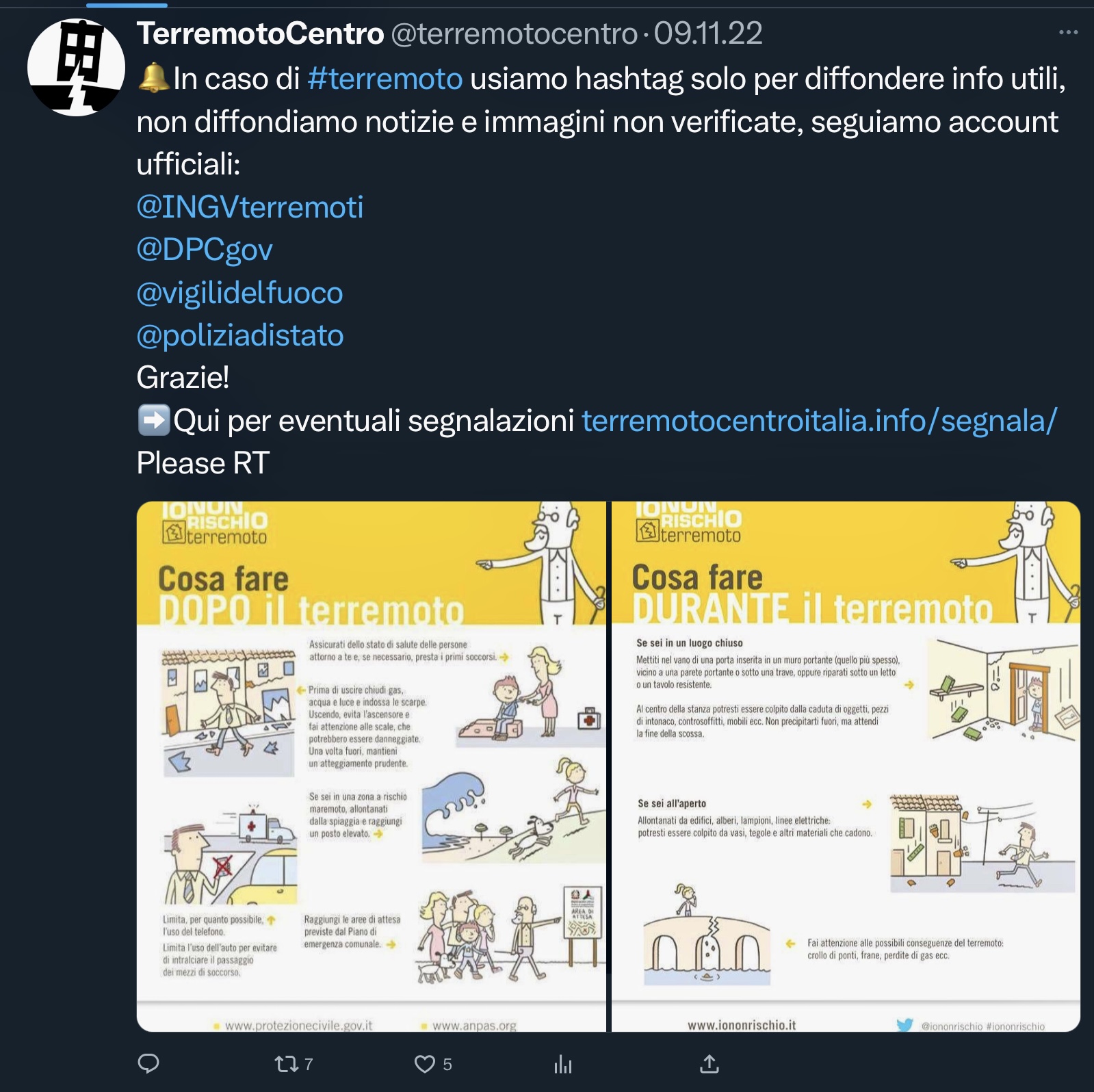From LINKS Community Center
Created: 14 October 2022
Last edited: 29 November 2023
Last edited: 29 November 2023
Terremoto Centro Italia is an opensource and open access crowdsourcing platform with the purpose to provide a space where people can share useful and verified information and requests about earthquakes that hit Central Italy between 2016-2017. The platform is a no profit initiative totally based on the work of volunteers.
Hazard:
EarthquakeYear:
2016Location:
ItalyScale:
CountryInvolved Organisations:
ActionAid, IT ExpertsPublishing Organisation
Ubiquiti Networks (UNIFI)
Category
Real-world
Theme
Crowdsourcing
Thematic
- Collecting and Analysing Information from SMCS
- Mobilising Volunteers
Disaster Management Phase
After
Description
In August 2016, the centre of Italy was hit by a major earthquake of magnitude 6.0, which caused great damage and claimed many victims: many houses, buildings and structures collapsed, one of the hospitals was also damaged and people were left homeless. There were about 300 victims and about 400 injured. In the first moments of the emergency, nobody knew what kind of disaster it was. Then, a flood of information arrived on various platforms and without verification. Thus, a group of computer technicians, experts in civic hacking, decided to create the platform where the information could be verified on a voluntary basis. Many people from Italy were engaged to ensure the platform could work effectively. People consulting the platform could see who and how to help or get help. The efficiency of the platform was ensured by the participation of ActionAid, an international NGO involved in the response phase.What worked well and could be recommended to others?
It worked well, so it has been replicated for the COVID-19 pandemic. People from different parts of Italy provided their help and support thanks to the section “Needs”. The platform is easy and intuitive to access, and is structured in a few sections which are clearly separated. It allows people to have access to official information on how to behave in certain situations and what was happening. An NGO helped a lot in the dissemination and sharing of the platform, ensuring the continuity in work and reliability of information. Additionally, the information provided on the platform has been verified before it is published. To minimise the risk of disinformation and the spread of fake news, the "Fake News" section identifies false information.What limitations were identified?
As many online platforms, this one also suffers the danger of fake news and disinformation. In addition, there was a problem of accessibility: as some rules are not satisfactory yet.Which social media and crowdsourcing technologies were used?
Additional Links
- https://terremotocentroitalia.info/
- https://github.com/emergenzeHack/terremotocentro/wiki
- https://www.ilfattoquotidiano.it/2016/08/24/terremoto-centro-italia-la-diretta-almeno-120-morti-case-implose-fase-critica-deve-ancora-iniziare-foto-e-video/2992595/
- https://www.repubblica.it/cronaca/2016/08/24/news/terremoto_amatrice_l_aquila-146543028/
- http://www.interno.gov.it/it/speciali/centro-italia-colpito-dal-terremoto
- Crisis Communication:
- Earthquake safety tips]
- Terremoto Cosa fare


